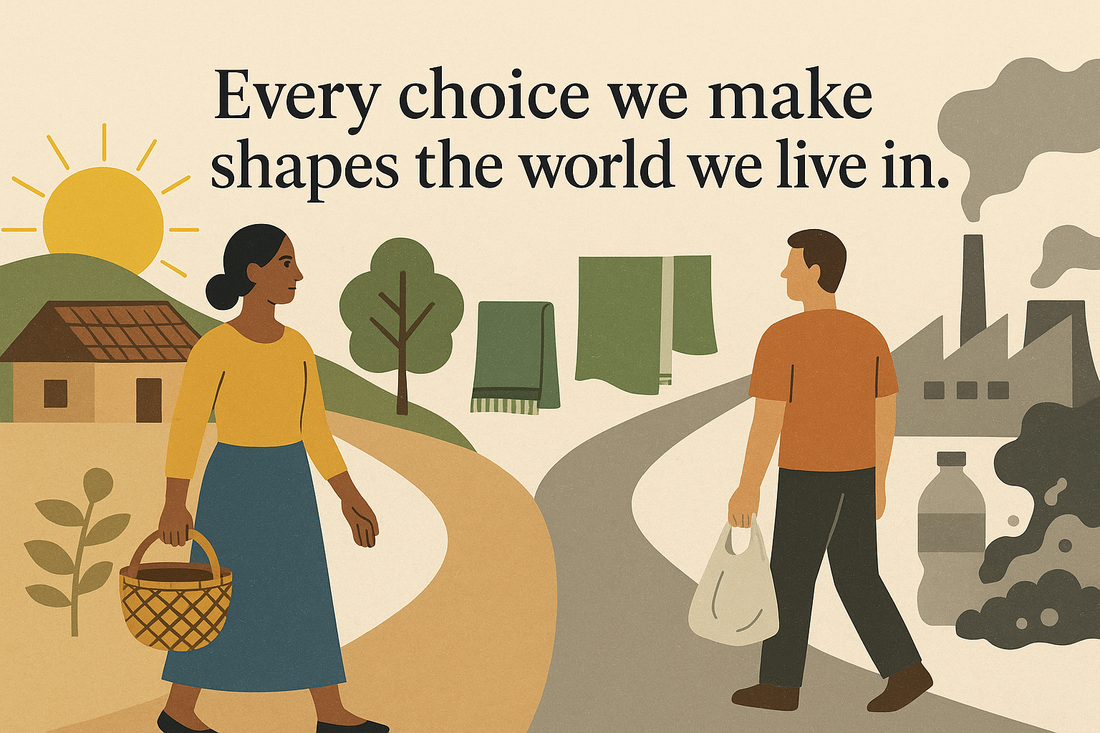
Sensible / Unsensible: A Conscious Choice by Daroonjinish
Share
Every choice we make shapes the world we live in.
In a time when consumption is constant and convenience often overshadows conscience, we at Daroonjinish invite you to pause and reflect:
Are your choices sensible—or unsensible?
This isn’t a lecture. It’s a lens.
A lens through which we see two paths—one of care, consciousness, and community. And the other, of haste, harm, and habitual damage.
Let’s walk both—and see where they lead.
There was once a time when choices were made slowly. When a basket wasn’t just a basket—but an heirloom shaped by earth and intention. When cloth wasn’t packaged in plastic, and a child learned from her mother how to patch, preserve, and protect.
And then came speed. And sameness.
And somewhere in that rush, we lost the plot.
At Daroonjinish, we aren’t just reviving craft. We’re questioning the very fabric of what’s called “modern.”
This blog isn’t a list. It’s a reflection. A conversation.
A look into what’s sensible—and what, quietly, has become unsensible.
1. Color That Heals vs. Color That Harms
Once upon a time, the color indigo was fermented under the sun. Turmeric lent its golden hue to cloth. Dyeing was a ritual of rhythm and respect. But today, factories belch out synthetic dyes that poison rivers faster than they color cloth.

Takeaway:
The color of your fabric shouldn't stain the earth it came from.
2. The Disappearing Wrap vs. The Forever Waste
When we use cloth or jute to pack a product, it can be reused, recycled—or simply return to nature. But plastic wraps, bubble sheets, and synthetic boxes pile up in landfills and oceans, staying there for hundreds of years.

Takeaway:
What we throw away doesn’t go away.
3. Second Life vs. Single Use
In older homes, nothing was thrown away. Old clothes became bags, torn saris became quilts. But today, fast production means even small defects lead to waste. Unused fabric and unsold items are dumped every day.

Takeaway:
Nothing is useless if you still care to use it.
4. Earth’s Fibres vs. Man-Made Fiber
Sabai, jute, and bamboo come from the earth—and return to it when their work is done.
Plastic-based materials like polyester never really go away. They clog oceans, harm animals, and even enter our food.

Takeaway:
If it can’t return to the earth, it has no place in your home.
To be “unsensible” is not a crime.
We have all made choices before we knew better.
But once we know—we must begin again.
At Daroonjinish, every bag, mat, basket, and box is designed to be rooted in earth and risen from empathy.
We call it beautiful sense. And we’re inviting you to practice it—with us.
